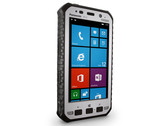
Panasonic ToughPad FZ-E1 Handheld Review
Qualcomm Snapdragon 801 MSM8974AB | Qualcomm Adreno 330 | 5.00" | 426 g
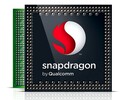
The Qualcomm Snapdragon 801 MSM8974AB is an ARM-based SoC for tablets and smartphones. It is built at TSMC in a 28nm HPM (High Performance Mobile) HKMG process, whereas the Snapdragon 600 was manufactured in 28nm LP. In addition to 4 CPU cores with a clock speed of up to 2.36 GHz, the chip also integrates an Adreno 330 GPU up to 578 MHz, an LPDDR3-1866 memory controller and various radio modules (UMTS/LTE, WiFi, Bluetooth, GPS). The slightly higher CPU/GPU clocks and faster memory support are the key differences to the Snapdragon 800 MSM8974.
Processor
The CPU portion is based on Qualcomm's Krait architecture, which is compatible with the ARMv7 ISA. Compared to the Snapdragon 600 (Krait 300), the new Krait 400 cores of the Snapdragon 800/801 have been tweaked just slightly with faster L2 cache. Thanks to a clock rate of up to 2.36 GHz and a high performance per MHz somewhere between an ARM Cortex-A9 and a Cortex-A15, the Snapdragon 801 offers very strong CPU performance. The S801 competes with the Nvidia Tegra 4, Samsung Exynos 5420 and Apple A7 and is therefore one of the fastest ARM SoCs on the market as of 2013.
Graphics
Another difference between the Snapdragon 600 and 800/801 is the graphics unit. While the S600 implements an Adreno 320 (400 to 450 MHz), the S800 /S801 feature the faster Adreno 330 (MSM8974AB: 578 MHz). Both GPUs offer the same amount of texture units (8 TMUs), but the Adreno 330 has 50 percent more shaders (probably 6x SIMD16 vs. 4x SIMD16 of the previous generation). In conjunction with the higher memory bandwidth, the performance is significantly better. As a result, the Adreno 330 is slightly faster than the Mali-T628 (Exynos 5420) and the PowerVR G6430 (Apple A7). Depending on the device and cooling, however, the performance may vary. The GPU supports OpenGL ES 3.0 as well as OpenCL 1.2.
Features
Furthermore, the MSM8974AB supports many wireless technologies: Bluetooth 4.0, WLAN, IEEE 802.11a/b/g/n/ac (2.4/5 GHz), GSM (GPRS, EDGE), W-CDMA/UMTS (HSDPA, HSUPA, HSPA+, cat.29 DC-HSPA+), MBMS, cat.4 LTE, CDMA2000 (1X RTT, 1 × EV-DO Rel.0/Rev.A/Rev.B, 1× EV-DO Rev.A MC, 1× Adv Rev.A/Rev.B) and TD-SCDMA.
The MSM8974AB can encode and play UHD 4K videos in 3840x2160 at 30 FPS (120 Mbps H.264 High Profile) simultaneously via dedicated hardware. Moreover, it supports both USB 2.0 and 3.0 and cameras up to 55 megapixels and stereoscopic 3D.
Power Consumption
Thanks to the new 28nm HPM HKMG process, the energy efficiency has been improved significantly compared to its LP 28nm S600 predecessor. Depending on the field of application, the maximum power consumption should be about 3 W for smartphones or 4 W or greater for tablets. This should be similar to comparable ARM SoCs currently in the market. However, the MSM8974AB will likely to need a little more power than the slightly lower clocked MSM8974.
| Codename | Krait 400 | ||||||||||||||||||||
| Series | Qualcomm Snapdragon | ||||||||||||||||||||
Series: Snapdragon Krait 400
| |||||||||||||||||||||
| Clock Rate | 2360 MHz | ||||||||||||||||||||
| Level 1 Cache | 0 MB | ||||||||||||||||||||
| Level 2 Cache | 2 MB | ||||||||||||||||||||
| Number of Cores / Threads | 4 / 4 | ||||||||||||||||||||
| Manufacturing Technology | 28 nm | ||||||||||||||||||||
| Features | Adreno 330 (578 MHz), LTE cat.4, UMTS, MBMS, GSM, CDMA2000, tD-SCDMA, 802.11a/b/g/n/ac (2.4/5 GHz), Bluetooth 4.0, 2x 32 Bit LPDDR3-1866 Memory Controller (14.9 GB/s) | ||||||||||||||||||||
| GPU | Qualcomm Adreno 330 (578 MHz) | ||||||||||||||||||||
| Architecture | ARM | ||||||||||||||||||||
| Announcement Date | 06/19/2013 | ||||||||||||||||||||

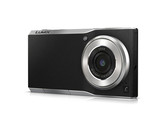
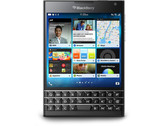
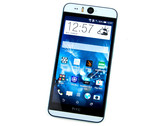
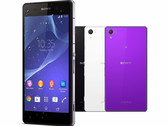
HTC One M8: Qualcomm Adreno 330, 5.00", 0.2 kg
Review » Review HTC One M8 Smartphone
Asus Padfone S PF500KL: Qualcomm Adreno 330, 5.00", 0.2 kg
External Review » Asus Padfone S PF500KL
Panasonic ToughPad FZ-E1: Qualcomm Adreno 330, 5.00", 0.4 kg
External Review » Panasonic ToughPad FZ-E1
HTC One M8 Eye: Qualcomm Adreno 330, 5.00", 0.2 kg
External Review » HTC One M8 Eye
HTC Desire EYE: Qualcomm Adreno 330, 5.20", 0.2 kg
External Review » HTC Desire EYE
BlackBerry Passport: Qualcomm Adreno 330, 4.50", 0.2 kg
External Review » BlackBerry Passport
HTC One M8 For Windows: Qualcomm Adreno 330, 5.00", 0.2 kg
External Review » HTC One M8 For Windows
ZTE Grand S Pro: Qualcomm Adreno 330, 5.00", 0.2 kg
External Review » ZTE Grand S Pro
HTC One M8: Qualcomm Adreno 330, 5.00", 0.2 kg
External Review » HTC One M8
Sony Xperia Z2: Qualcomm Adreno 330, 5.20", 0.2 kg
External Review » Sony Xperia Z2
» Mobile CPU Comparison
Comparison of all mobile CPU series
» Mobile Processors - Benchmarklist
Benchmarklist of all known CPUs that are used in laptops (desktop and laptop CPUs)
Top 10 Laptops
Multimedia, Budget Multimedia, Gaming, Budget Gaming, Lightweight Gaming, Business, Budget Office, Workstation, Subnotebooks, Ultrabooks, Chromebooks
under 300 USD/Euros, under 500 USD/Euros, 1,000 USD/Euros, for University Students, Best Displays
Top 10 Smartphones
Smartphones, Phablets, ≤6-inch, Camera Smartphones